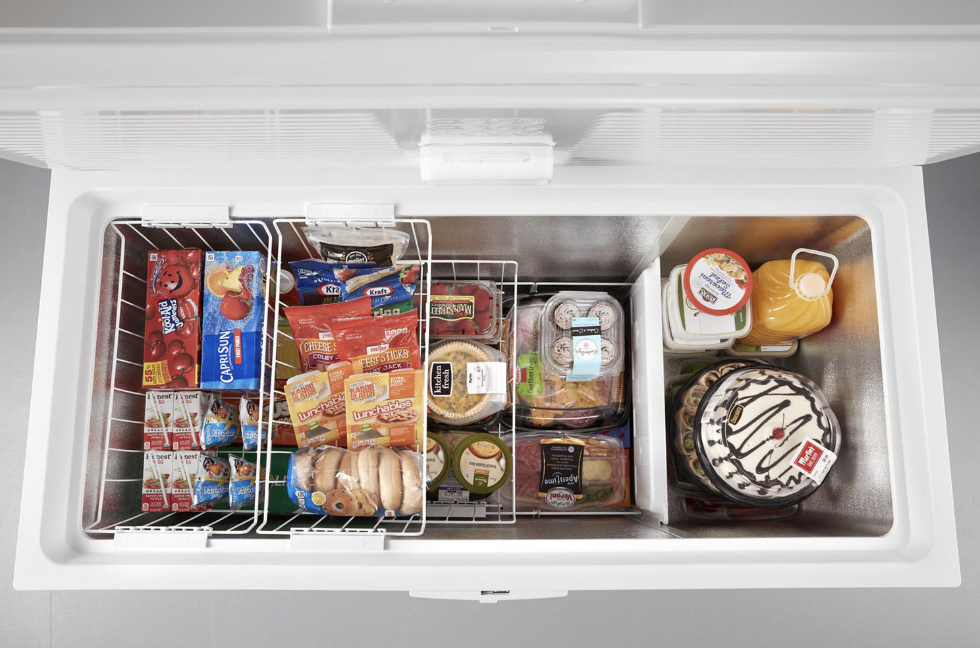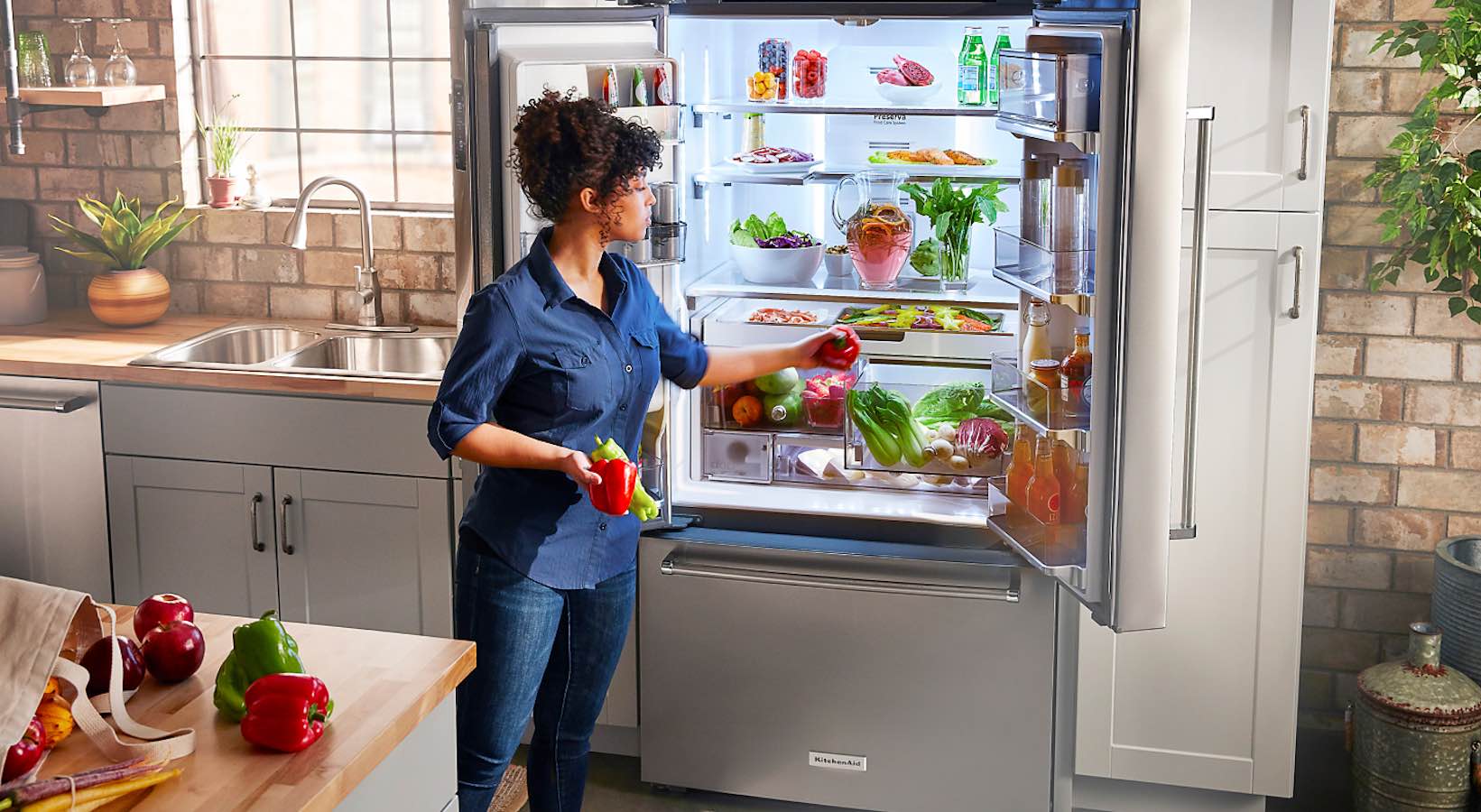
With food prices on the rise and a desire to reduce food waste for environmental reasons as well, we all want to stock our refrigerators but also make sure that the food is stored correctly and will last to at least their best before dates, potentially beyond. This, however, requires different conditions and storage tips depending on what type of food you’re talking about.
I covered ways to get the most out of your produce in a recent article, including how best to store various fruits and vegetables that require refrigeration (and which ones do not). But what about when it comes to meat and poultry? Leftovers? Even condiments. Here are some tips and tricks along with a handy guide for common food storage.
Tips for storing meat and poultry in the refrigerator
If you’re looking to get the most out of your meat and poultry (and who isn’t?) follow these simple but useful tips.
Make sure the refrigerator is at the right temperature

Don’t discount the importance of making sure your refrigerator is at the proper temperature for safe food storage. My colleague Shelly Wutke covers this in a recent article about the proper fridge and freezer temperatures, noting that a fridge should be -18°C (0°F) and a freezer 35°F to 38°F. Anything higher than that and bacteria can grow on the food.
Store in the coldest section of the refrigerator
Store your meat and poultry immediately in the fridge once you get home from the grocery store or butcher shop. It’s a good idea to add them to your cart last so they aren’t sitting at room temperature for an extended period of time while you shop.
Keep them away from other foods once in the refrigerator. This includes keeping meat, poultry, and fish away from one another, and away from already cooked leftovers. Store items in the coldest, interior section of the fridge. And make sure to put them on the bottom shelf so raw juices don’t drip onto and contaminate other food.
Repackage tightly after opening if you’re not freezing
If you have a package of fresh burgers, bacon, hot dogs, or other items, make sure to re-package them properly before placing them back in the fridge. You can use Ziplock bags and ensure they are sealed, removing air before you secure them, or even tight Saran wrap. You can also use Tupperware containers with tight-fitting lids, which is especially useful for leftovers. If you know you won’t get to the rest of the item before the best by date (or before the date specified for fridge storage after opening, like packaged deli meats and hot dogs), package and freeze them immediately.
Cook more than you need, marinate

Another option is to cook more than you need. This sounds silly, but there’s a reason. Once cooked, meat and poultry will last longer in the refrigerator. I’ll often cook an extra helping or two of dinner and use the leftovers for my son’s school lunch the next day (think leftover steak sliced for a steak sandwich) and for my own lunch. Or I’ll cook a large batch of ground beef and put half of it in the fridge. One half is used for Taco Tuesdays and the other half for a Wednesday night shepherd’s pie. A couple leftover sausages? Cook them up then reheat the next day with some veggies for a carb-free lunch.
Another thing you can do if meat or poultry is about to go bad is marinate it. Marinades that contain ingredients like balsamic vinegar will help keep the meat or poultry fresh as it soaks up the juices and prepares for cooking. If you have pork chops that are only good until Wednesday but you know you won’t cook them until Thursday, take 10 minutes to marinate them on Tuesday night, then fire up the grill or the oven on Thursday.
Freeze items you know you aren’t going to use

Which brings me to the next point: freeze! You can save money by buying meat and poultry in bulk. But if you don’t have a large family, this could result in tons of waste and spoilage. Break up packages as soon as you get home and divide: some for the fridge, some for the freezer. I typically buy a large package of ground beef and cut it into four sections. I’ll keep one out that I know I’ll be using for a Bolognese sauce, for example, then place each of the three remaining sections in the freezer, packed in individually labeled Ziplocks. When I need one, I can pull it out the night before and let it defrost or pop it into my convection microwave on the defrost cycle before cooking. You can do the same with things like chicken breasts and legs. Portion them based on your family (two per bag, three, etc.) then pull out a serving as needed.
If you have limited freezer space in your refrigerator, it might be worth investing in a chest freezer for the basement or garage. These are a big investment, but they will pay for themselves in the long run when you see how much you’ll save. You can toss everything from meat and poultry to loaves of bread and other items in there before mold growth begins.
Keep the fridge clean

Last, make sure the fridge is kept clean at all times. Remove old and expired foods, keeping shelves free of spills, and frost from the edges. Doing this will ensure the fridge runs more efficiently and in turn, keeps your food fresher, longer. It will also help prevent cross-contamination from the smells of spoiled food seeping into fresh food.
How to tell if meat or poultry has gone off
It’s happened to me on numerous occasions, and it has probably happened to you. I buy a package of chicken or fresh pork tenderloin only to open it before or by the “best before” date and discover that it has gone off. How can you tell? There are a few surefire ways.
- The smell test
The most obvious, though least pleasant, way to tell is by smell. If you smell a pungent odour from meat or poultry as soon as you open the package, or even if you put your nose right up to it, it has sadly gone off.
- The slime test
Another clear indicator is if the meat or poultry feels slimy or sticky on the outside. This is a likely indicator that it has gone off or is about to and you should steer clear of cooking or eating it.
- The colour test
Some meat and poultry will show their state based on the exterior colour. While some red meats can get a dark brownish colour even when they’re still good to eat, if you notice a greenish or dull colour on meat or poultry, or a significant change in colour, it might have gone off. Poultry that has gone bad, meanwhile, will lose its typical white, yellow, or even bluish-white colour.
- Freezer burn
If you have stored meat and poultry, or even vegetables, in the freezer and pull them out to find that they’re covered in freezer burn, you’re best to discard. This means the freezer’s temperature is not set correctly, or there could be a leak from a faulty door seal. Whatever the case, even if the meat is safe to eat, it will probably not taste very good.
What should you do if meat or poultry has gone off?
When you’re absolutely certain that something has gone off, toss it, unfortunately. But also, as the saying goes, “when in doubt, throw it out.” You might cringe at the thought of throwing away food you bought with your hard-earned money. But the alternative of potentially eating meat or poultry that has gone off could be far worse. It’s not worth the risk.
Why you should never consume spoiled meat or poultry
Spoiled meat or poultry doesn’t just smell and taste bad, it can be harmful, potentially causing food poisoning. Symptoms can include everything from vomiting to nausea, stomach cramps to diarrhea, headache, constipation, and persistent fever. In some cases, the symptoms start right away while in others, it can happen days later.
Certain people are at higher risk for worse symptoms and illnesses due to foodborne illnesses. These include pregnant women, children, adults over 60, and those with weaker immune systems.
General meat, poultry, and other food storage guidelines

So, how long can foods be safely kept in the fridge anyway? “Best before” or “best by” dates are a useful guide, while “expiry dates” tell you when the food should absolutely be discarded if not consumed. But there are items that you might not be sure about.
Here’s a handy list with general guidelines taken from various sources, including Health Canada, and using an estimation and average.
Raw foods
Chicken and turkey: 2-3 days
Ground beef: 1-2 days
Beef, steak, and ribs: 3-5 days
Pork roast, chips, or ribs: 3-5 days
Fish: 3-4 days
Shrimp, scallops, and other shellfish: 1-2 days
Sausage: 1-2 days
Bacon: 1 week
Hot dogs: 2 weeks (1 Week once opened)
Deli meat: 2 weeks, 3-5 days (once opened)
Eggs: 3-5 weeks (do the water test: drop one in water. If it sinks, it’s very fresh. If it stands on one end, it’s acceptable to eat. If it floats, it’s no longer safe to eat.)
Prepared foods

Leftovers: 3-4 days (varies based on what it is and how it’s stored)
Rotisserie chicken: 3-4 days
Cooked shrimp: 3-4 days
Cooked ham: 3-4 days
Soups and stews: 3-4 days
Cookies: 2 months
Hard-boiled eggs: 1 week
Egg salad: 3-5 days
Cooked fish: 3-4 days
Cooked ground beef: 3-4 days
Cake: 1 week
Muffins: 1 week
Pie: 3-4 days
Popular fruits and vegetables

Apples, carrots: 3 weeks
Avocados, asparagus, green beans, peaches: 3-4 days
Beets: 7-10 days
Bell peppers, berries, cucumbers, zucchini: 4-5 days
Broccoli, cauliflower: 3-5 days
Cabbage, garlic, green onions: 1-2 weeks
Celery: 2 weeks
Cilantro, grapes, lettuce: 1 week
Corn: 1-2 days
Mushrooms: 2-3 days
Onions: 2 months
Spinach: 2-4 weeks
Tomatoes: 2-3 days (outside of refrigerator)
Dairy items (without labels or after opening)

Butter: 1-3 months (3 weeks once opened)
Hard cheese: 10 months, 3-4 weeks (once opened)
Margarine: 6 months
Milk: 1 week
Processed cheese slices: 5 months
Soy milk: 1 week
Whipped cream: 1 day
Yogurt: 3 days
Condiments and sauces
Barbecue sauce: 4 months
Jams: 6 months
Ketchup: 6 months (yes, it expires!)
Salsa: 1 month
Mayo: 2 months
Pickles: 1-2 weeks
Spaghetti sauce: 4 days
Salad dressing: 3 months
Maple syrup: 12 months
Keep your food safe, fresh, and delicious!

With some pre-planning and organization, you can balance ensuring you’re always eating fresh food with saving money and maximizing your food budget. Make sure your food is always properly stored at the right temperature. Be mindful of storage guidelines. When in doubt, use one of the tests above to determine if something is still safe to eat. But if you are questioning it, chances are you might be better off disposing of the food.
Avoid getting to this point by planning your meals weekly and freezing items you know you won’t use before they get close to expiry. Otherwise, it might help to, if you have the time, take more frequent but smaller trips to the grocery store, buying only what you’ll need for the next few days.
Meat and poultry might lose some of its quality and taste after lengthy periods of storage in the freezer. But in most cases, they can be stored for months, even up to a year, with proper freezer temperatures. With a good microwave or convection microwave that has a defrost cycle, or timing it to defrost naturally in the fridge, and you’ll never have to throw a piece of meat or poultry away again.
See a wide selection of refrigerators that can help your food last longer and stay fresher at Best Buy Online.




The shelf life of food in the refrigerator can vary depending on the type of food and how it is stored. Here are some general guidelines:
1. Dairy Products:
– Milk: Unopened milk can last up to one week past the expiration date. Once opened, it should be consumed within 5 to 7 days.
– Yogurt: Unopened yogurt can last up to two weeks past the expiration date. Once opened, it should be consumed within 7 to 10 days.
– Cheese: Hard cheeses can last 3 to 4 weeks in the refrigerator, while soft cheeses should be consumed within 1 to 2 weeks.
2. Meat, Poultry, and Seafood:
– Raw or ground meat: It is recommended to use raw or ground meat within 1 to 2 days.
– Cooked meat: Cooked meat can be stored for 3 to 4 days.
– Poultry (chicken, turkey): Raw poultry should be used within 1 to 2 days, while cooked poultry can be stored for 3 to 4 days.
– Seafood: Fresh fish and shellfish should be consumed within 1 to 2 days.
3. Fruits and Vegetables:
– Most fruits and vegetables can last 3 to 7 days in the refrigerator. However, some fruits and vegetables, like berries and leafy greens, may spoil more quickly and should be used within a few days.
4. Leftovers:
– Cooked leftovers can be stored in the refrigerator for 3 to 4 days. It is important to cool them quickly and store them in airtight containers.
It’s worth noting that these are general guidelines, and individual food items may have different storage recommendations. It’s always best to use your judgment and check for signs of spoilage, such as unusual odors, mold, or significant changes in texture or color. When in doubt, it’s safer to discard the food.
Comments are closed.